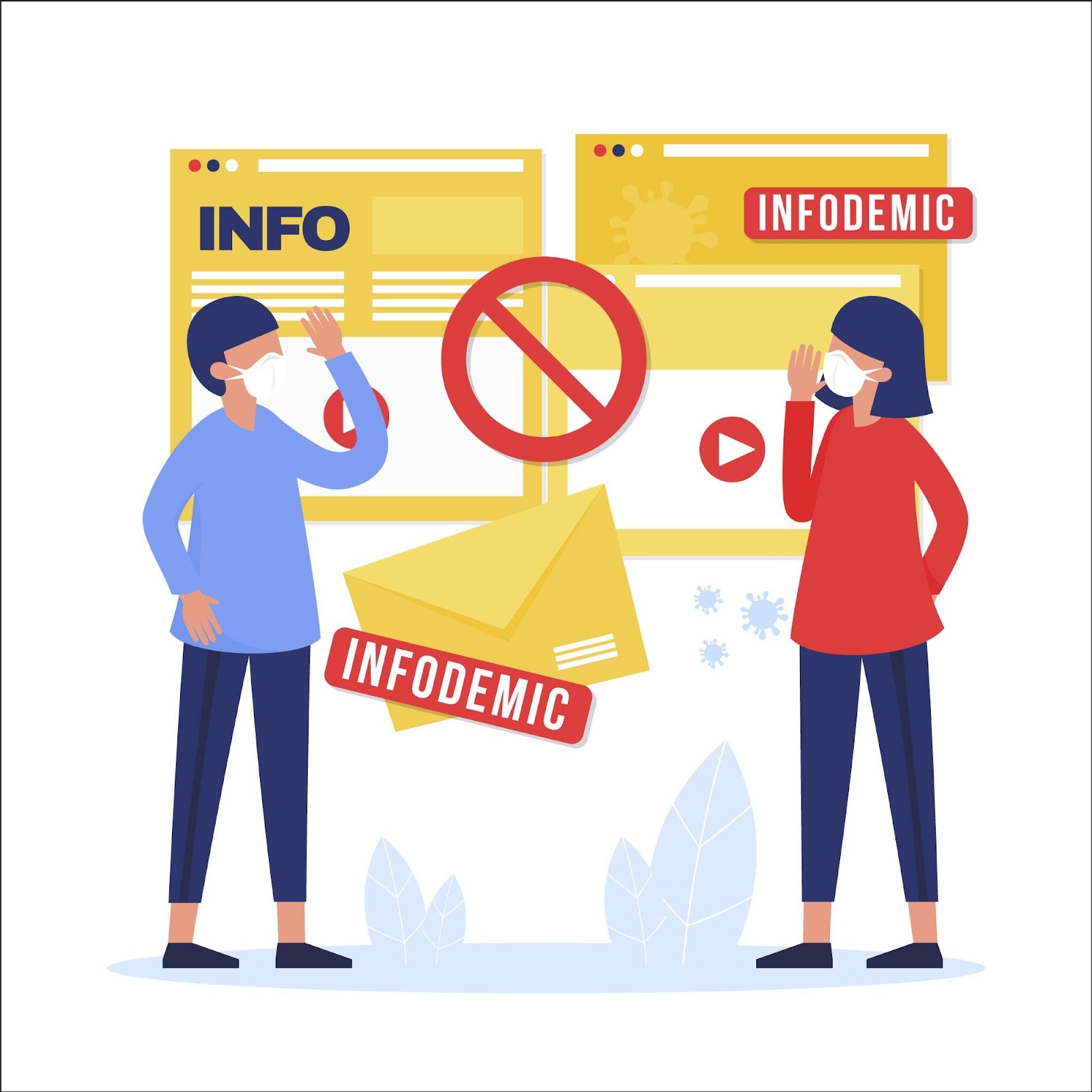In today’s digital age, a brand’s online reputation can be its most valuable asset or its most serious liability. When a crisis strikes, the way a company manages its online reputation can make or break its future. A single negative news story, tweet, or review can spread like wildfire, causing irreversible damage to a brand’s image. This is where the importance of a robust crisis management strategy comes into play.
Through this article, we’ll delve deep into how to manage your online reputation in a crisis, offering actionable strategies to ensure that your brand emerges stronger even in the face of adversity. With the right approach, navigating the stormy waters of a personal reputation crisis and coming out on the other side with your brand’s integrity intact is possible.
 The digital age has ushered in a new era where opinions, reviews, and feedback are shared instantaneously. This rapid exchange of information has amplified the significance of online reputation, especially during adverse times. A company’s online reputation is not just about its image; it’s a reflection of its values, ethics, and reliability. When a crisis hits, this reputation is put to the test.
Online reputation and crisis management go hand in hand. A damaged online reputation can escalate a minor issue into a full-blown crisis, while effective ORM (online reputation management) can mitigate the impact of a crisis. For instance, a study by BrightLocal found that 87% of consumers read online reviews for local businesses in 2020, up from 81% in 2019.
This statistic underscores the importance of maintaining a positive online image as it directly influences consumer trust and decision-making.
Moreover, stakeholders, including customers, investors, and partners, turn to online platforms during a crisis to gauge a company’s response. Whether positive or negative, their perception will be influenced by what they read, see, and hear online. Thus, managing online reputation in a crisis becomes a pivotal aspect of crisis communication strategy.
The digital age has ushered in a new era where opinions, reviews, and feedback are shared instantaneously. This rapid exchange of information has amplified the significance of online reputation, especially during adverse times. A company’s online reputation is not just about its image; it’s a reflection of its values, ethics, and reliability. When a crisis hits, this reputation is put to the test.
Online reputation and crisis management go hand in hand. A damaged online reputation can escalate a minor issue into a full-blown crisis, while effective ORM (online reputation management) can mitigate the impact of a crisis. For instance, a study by BrightLocal found that 87% of consumers read online reviews for local businesses in 2020, up from 81% in 2019.
This statistic underscores the importance of maintaining a positive online image as it directly influences consumer trust and decision-making.
Moreover, stakeholders, including customers, investors, and partners, turn to online platforms during a crisis to gauge a company’s response. Whether positive or negative, their perception will be influenced by what they read, see, and hear online. Thus, managing online reputation in a crisis becomes a pivotal aspect of crisis communication strategy.
 When a crisis strikes, the initial response can set the tone for how the situation unfolds. The importance of swift and transparent communication cannot be overstated. It’s the bridge that connects businesses with their stakeholders during turbulent times.
When a crisis strikes, the initial response can set the tone for how the situation unfolds. The importance of swift and transparent communication cannot be overstated. It’s the bridge that connects businesses with their stakeholders during turbulent times.
 In crisis scenarios, the stories and information disseminated about a brand can sway public opinion dramatically. A strategic approach to content can guide this narrative, ensuring it remains aligned with the brand’s truth and intentions.
In crisis scenarios, the stories and information disseminated about a brand can sway public opinion dramatically. A strategic approach to content can guide this narrative, ensuring it remains aligned with the brand’s truth and intentions.
 The aftermath of a crisis often leaves a brand’s reputation battered and bruised. However, it’s not the end of the road. Rebuilding trust and enhancing long-term reputation requires a deliberate and strategic approach.
The aftermath of a crisis often leaves a brand’s reputation battered and bruised. However, it’s not the end of the road. Rebuilding trust and enhancing long-term reputation requires a deliberate and strategic approach.
Understanding the Role of Online Reputation in Crisis Management
 The digital age has ushered in a new era where opinions, reviews, and feedback are shared instantaneously. This rapid exchange of information has amplified the significance of online reputation, especially during adverse times. A company’s online reputation is not just about its image; it’s a reflection of its values, ethics, and reliability. When a crisis hits, this reputation is put to the test.
Online reputation and crisis management go hand in hand. A damaged online reputation can escalate a minor issue into a full-blown crisis, while effective ORM (online reputation management) can mitigate the impact of a crisis. For instance, a study by BrightLocal found that 87% of consumers read online reviews for local businesses in 2020, up from 81% in 2019.
This statistic underscores the importance of maintaining a positive online image as it directly influences consumer trust and decision-making.
Moreover, stakeholders, including customers, investors, and partners, turn to online platforms during a crisis to gauge a company’s response. Whether positive or negative, their perception will be influenced by what they read, see, and hear online. Thus, managing online reputation in a crisis becomes a pivotal aspect of crisis communication strategy.
The digital age has ushered in a new era where opinions, reviews, and feedback are shared instantaneously. This rapid exchange of information has amplified the significance of online reputation, especially during adverse times. A company’s online reputation is not just about its image; it’s a reflection of its values, ethics, and reliability. When a crisis hits, this reputation is put to the test.
Online reputation and crisis management go hand in hand. A damaged online reputation can escalate a minor issue into a full-blown crisis, while effective ORM (online reputation management) can mitigate the impact of a crisis. For instance, a study by BrightLocal found that 87% of consumers read online reviews for local businesses in 2020, up from 81% in 2019.
This statistic underscores the importance of maintaining a positive online image as it directly influences consumer trust and decision-making.
Moreover, stakeholders, including customers, investors, and partners, turn to online platforms during a crisis to gauge a company’s response. Whether positive or negative, their perception will be influenced by what they read, see, and hear online. Thus, managing online reputation in a crisis becomes a pivotal aspect of crisis communication strategy.
Preparation: The Foundation of Effective Reputation Management
Preparation is the cornerstone of managing reputation effectively during an emergency. It involves a multifaceted approach, focusing on anticipating potential crises, establishing crisis response teams, and creating robust communication protocols. These elements are crucial in developing a crisis management strategy that is responsive, adaptable, and effective.Anticipating Potential Crises
Anticipating potential crises is the first step in preparation. By identifying possible risks and vulnerabilities, companies can develop proactive strategies for online reputation management. This involves conducting thorough risk assessments to identify areas of concern and potential triggers for a reputation crisis. Once the potential crises are identified, companies can create contingency plans, outlining the steps to be taken when a crisis occurs. These plans should include effective ORM tips to manage reputation crisis, ensuring that the company can respond swiftly and appropriately to mitigate damage to its online reputation.Establishing Crisis Response Teams
Establishing crisis response teams is another pivotal element. These teams are responsible for implementing the crisis management strategy and managing the company’s response. A well-structured crisis response team should include representatives from various departments, such as communications, legal, and operations, ensuring a holistic approach to manage online reputation in a crisis. The crisis response teams should be trained and equipped to handle different crisis scenarios. Regular drills and simulations can help hone their skills and ensure they are ready to act when a crisis strikes. The teams should also be empowered to make critical decisions promptly, avoiding delays that can exacerbate the situation and lead to a damaged online reputation.Creating Communication Protocols
Finally, creating clear and effective communication protocols is critical. Communication is the lifeline during a crisis, and having predefined protocols can streamline the flow of information. These protocols should outline who needs to be informed, what information should be communicated, and how it should be conveyed. Effective communication during a crisis is crucial for maintaining transparency and trust. It should acknowledge the crisis, provide timely updates, and express empathy and concern. The communication should also be consistent across all platforms, avoiding discrepancies that can lead to confusion and misinformation.Immediate Response: Swift and Transparent Communication
 When a crisis strikes, the initial response can set the tone for how the situation unfolds. The importance of swift and transparent communication cannot be overstated. It’s the bridge that connects businesses with their stakeholders during turbulent times.
When a crisis strikes, the initial response can set the tone for how the situation unfolds. The importance of swift and transparent communication cannot be overstated. It’s the bridge that connects businesses with their stakeholders during turbulent times.
Acknowledging the Crisis
Why It’s Crucial: Ignoring or downplaying a crisis can lead to rampant speculation and misinformation. When stakeholders don’t hear from the company directly, they often turn to other sources, which may not always be accurate or favorable. Best Practices: Immediate Acknowledgment: Even if all the details aren’t clear, a simple acknowledgment that the company is aware of the situation and is actively looking into it can go a long way. Designated Spokesperson: Having a consistent voice representing the company ensures clarity and reduces the risk of mixed messages. This spokesperson should be well-informed and trained in crisis communication. Avoid Speculation: Only share what you know. Guessing or providing unverified information can lead to further complications and mistrust.Providing Timely Updates
Why It’s Crucial: In the absence of updates from the company, stakeholders might assume the worst or believe unfounded rumors. Regular updates show proactiveness and control over the situation. Best Practices: Set a Schedule: Inform stakeholders when they can expect the next update. This can reduce anxiety and speculation. Use Multiple Channels: Utilize the company website, social media, press releases, and direct emails to ensure stakeholders receive updates through their preferred channels. Stay Consistent: Ensure that the messaging is consistent across all platforms to avoid confusion.Expressing Empathy and Concern
Why It’s Crucial: During a crisis, stakeholders are often anxious, concerned, or even angry. They need to know that the company understands and cares about their feelings and the impact of the crisis on them. Best Practices: Genuine Empathy: Avoid scripted or generic responses. Personalize the message to show genuine concern for the affected parties. Listen Actively: Use social media and other platforms to listen to stakeholders’ concerns and feedback. This can provide insights into their primary worries and help tailor the company’s response. Offer Support: If applicable, provide resources or support to those affected. This could be in the form of helplines, compensation, or other relevant assistance.Social Media Management: Navigating the Digital Landscape
With its vast expanse of social media platforms, the digital realm plays a pivotal role in shaping a brand’s image, especially during crises. The immediacy and reach of platforms like Twitter, Facebook, and Instagram mean that good and bad news can spread globally within minutes. Effectively navigating this landscape is paramount for reputation management during a crisis situation.Monitoring Mentions and Conversations
The Power of Real-time Insights: Every tweet, comment, or share on social media platforms can offer a wealth of information. By actively monitoring mentions and conversations related to your brand, you can gauge the prevailing sentiment, be it positive, negative, or neutral. Tools and Techniques: Several advanced tools, such as Brandwatch, Mention, and Hootsuite, allow brands to track their mentions across various platforms. These tools can send real-time alerts, enabling companies to respond promptly. Additionally, sentiment analysis can provide a deeper understanding of the emotions behind the mentions, allowing for more tailored responses. Benefits: By keeping a finger on the pulse of social media chatter, companies can preemptively address issues, correct misinformation, and engage in constructive dialogues, thereby managing their online reputation more effectively.Addressing Negative Comments Strategically
The Art of Tactful Engagement: Negative comments, if left unaddressed, can snowball into larger issues. However, responding requires a strategic approach, ensuring that the response doesn’t inadvertently exacerbate the situation. ORM tips for crisis communication:- Acknowledge and Apologize: If the company is at fault, acknowledging the mistake and offering a sincere apology can go a long way in rebuilding trust.
- Provide Context: If there’s a misunderstanding, offer clear and concise information to provide context without being defensive.
- Take Conversations Offline: For more complex issues, consider moving the conversation to a private channel like direct messaging or email to discuss in detail.
Engaging with Stakeholders
Building Bridges through Engagement: Stakeholders, including customers, partners, and even critics, seek engagement. They want to be heard, understood, and valued. Engagement Techniques:- Host Q&A Sessions: Platforms like Twitter and Instagram offer features for live Q&A sessions, allowing companies to directly address concerns and questions.
- Share Behind-the-Scenes Content: Offering a glimpse into the company’s operations or decision-making processes can humanize the brand and build trust.
- Collaborate with Influencers: Partnering with trusted voices in the industry can help convey the brand’s message more effectively.
Content Strategy: Shaping the Narrative
 In crisis scenarios, the stories and information disseminated about a brand can sway public opinion dramatically. A strategic approach to content can guide this narrative, ensuring it remains aligned with the brand’s truth and intentions.
In crisis scenarios, the stories and information disseminated about a brand can sway public opinion dramatically. A strategic approach to content can guide this narrative, ensuring it remains aligned with the brand’s truth and intentions.
Crafting Authentic and Transparent Messages
Genuine Communication as a Beacon: In the digital age, authenticity isn’t just preferred, it’s demanded. Stakeholders seek genuine insights, desiring clarity over corporate jargon. When a brand communicates with sincerity, it forms a bond of trust with its audience. Pathways to Transparent Dialogue:- Lay It Bare: Embrace the situation by sharing the known facts, even if they’re tough. This openness can deter speculation and showcase a brand’s commitment to truth.
- Speak with One Voice: Regardless of the platform or medium, ensure that every piece of communication reflects the same core message, reinforcing the brand’s reliability.
Sharing Corrective Actions and Solutions
Beyond Words to Deeds: Acknowledgment is the first step, but stakeholders anticipate and appreciate action. They’re keen to understand the brand’s roadmap to resolution and its strategies for future prevention. Blueprint for Conveying Solutions:- Chart the Course: Clearly communicate the measures being adopted to tackle the crisis. This could encompass internal audits, partnerships with external agencies, or procedural overhauls.
- Set the Clock: Offer a realistic timeline for these corrective actions, helping stakeholders gauge the brand’s dedication to resolving the issue.
Countering Misinformation
Navigating the Information Maze: In the heat of a crisis, false narratives can gain traction, muddying the waters. Actively dispelling these myths is crucial to uphold a brand’s credibility. Tactics to Debunk Misinformation:- Stay Alert: Employ monitoring tools to keep a pulse on the brand’s portrayal across channels, enabling swift identification and rectification of false narratives.
- Collaborate with Trusted Voices: Align with respected industry figures or organizations to validate your statements, enhancing their weight and credibility.
- Empower through Knowledge: Develop content that enlightens stakeholders, using formats like infographics, webinars, or articles to simplify and clarify complex topics.
Monitoring and Evaluation: Adapting Strategies
The journey of managing online reputation during a crisis is one of constant evolution. The strategies need continuous scrutiny and refinement to stay effective. Through diligent tracking of online sentiment, meticulous analysis of engagement metrics, and thoughtful incorporation of learned lessons, brands can fortify their reputation management strategies.Tracking Online Sentiment
Understanding Public Mood: The sentiments expressed online are a mirror of the stakeholders’ perceptions and feelings about a brand during a crisis. Tapping into these sentiments is crucial to comprehend the underlying emotions and thoughts. Approaches to Sentiment Analysis:- Utilize Sophisticated Tools: Employ platforms like Mention, Brandwatch, or Meltwater to delve into real-time sentiment analysis across diverse digital platforms.
- Scrutinize Individual Responses: A manual review of individual comments and discussions can unearth nuanced insights and subtleties that automated tools might overlook.
- Keep Abreast of Media Narratives: Regularly monitor media publications and influential opinion pieces to discern the prevailing sentiment and narratives in the public domain.
Analyzing Engagement Metrics
Deciphering the Data: Engagement metrics serve as a numerical narrative, revealing the resonance and impact of the brand’s communications and content strategies. Framework for Analyzing Engagement:- Monitor Analytics Platforms: Leverage the analytics features of platforms like Instagram Insights, LinkedIn Analytics, or Google Analytics to comprehensively understand engagement levels.
- Detect Trends and Anomalies: Examine the data to identify recurring patterns or anomalies in engagement, indicating the types of content or communication that are hitting or missing the mark.
- Benchmarking Analysis: Compare the current engagement levels against industry norms or historical data to assess the relative impact of the crisis on engagement.
Incorporating Lessons Learned
Learning and Evolving: Every crisis presents a learning curve. Reflecting on the successes and shortcomings of the crisis management approach paves the way for enhancements and refinements. Methods for Incorporating Insights:- Hold Reflective Debriefs: Post-crisis, convene with the core team to dissect the crisis management approach, evaluate the effective strategies, and identify the areas needing improvement.
- Gather Stakeholder Insights: Seek stakeholder feedback through structured surveys or discussions to gain diverse perspectives on the brand’s handling of the crisis.
- Compile and Revise: Meticulously document the insights, strategies, and outcomes and revise the crisis management playbook based on the acquired knowledge.
Rebuilding Trust and Long-Term Reputation Enhancement
 The aftermath of a crisis often leaves a brand’s reputation battered and bruised. However, it’s not the end of the road. Rebuilding trust and enhancing long-term reputation requires a deliberate and strategic approach.
The aftermath of a crisis often leaves a brand’s reputation battered and bruised. However, it’s not the end of the road. Rebuilding trust and enhancing long-term reputation requires a deliberate and strategic approach.
Addressing Immediate Concerns
Immediate Redemption: Start by addressing the immediate concerns that arose during the crisis. Stakeholders may have unanswered questions or lingering doubts. Respond promptly and transparently to resolve these issues. Taking Responsibility: Take full responsibility if the crisis resulted from the brand’s actions or negligence. Acknowledge mistakes, apologize sincerely, and outline concrete steps to rectify them.Commitment to Improvement
Demonstrate Change: To rebuild trust, show that the crisis was a catalyst for positive change. Implement new policies, procedures, and safeguards to prevent a recurrence. Communication is Key: Regularly communicate these improvements to stakeholders, demonstrating the brand’s commitment to transparency and accountability. You can also use these techniques to improve your online reputation management.Consistent and Positive Messaging
Craft a Positive Narrative: Share stories of resilience and growth that emerged from the crisis. Highlight the brand’s dedication to its values and mission. Stay Engaged: Continue engaging with stakeholders through positive, informative, and valuable content. Consistent communication helps reinforce trust over time.Proactive Reputation Enhancement
Strategic Reputation Enhancement: Don’t wait for the next crisis to hit. Proactively enhance your reputation by consistently delivering on promises, fostering strong relationships, and actively seeking feedback. Diversify Your Efforts: Use multiple channels, from social media to thought leadership articles, to positively shape your brand’s narrative. Consider partnerships, community involvement, and sustainability initiatives as avenues for reputation enhancement.Ethical Considerations in Crisis Reputation Management
Ethics serve as the cornerstone of responsible conduct in the intricate landscape of crisis reputation management. Beyond mere legality, ethical principles guide a brand’s actions, ensuring that they not only navigate the crisis effectively but also maintain their integrity and public trust. Let’s delve deeper into the key ethical considerations in crisis reputation management:Transparency and Honesty
Moral Imperative: Transparency and honesty form the bedrock of ethical crisis management. Concealing information or distorting the truth can be detrimental not only to the brand’s reputation but also to the trust of stakeholders. Ethical Actions:- Full Disclosure: Ethical crisis management demands the full disclosure of all relevant information, even if it reflects negatively on the brand.
- Avoid Manipulation: The ethical path involves presenting facts truthfully and avoiding manipulative tactics, such as spin or selective disclosure.
- Resist Suppression: The brand must resist any temptation to hide or suppress negative information or criticism, upholding the principles of openness and accountability.
Accountability and Responsibility
Path to Redemption: Taking accountability for mistakes and assuming responsibility for their consequences is an ethical duty and a means of building trust and credibility. Ethical Actions:- Accept Fault: Ethical crisis management requires acknowledging the brand’s role in the crisis, particularly when it is at fault.
- Make Amends: To regain trust, the brand should take concrete steps to rectify the situation and, if applicable, compensate those affected.
- Prevent Recurrence: Ethical responsibility extends to taking measures to prevent similar crises from occurring in the future, reflecting a commitment to continuous improvement.
Respect for Stakeholders
Honoring Relationships: Ethical crisis management recognizes that stakeholders have intrinsic worth and deserve to be treated with respect, fairness, and empathy. Ethical Actions:- Empathetic Engagement: Engaging with stakeholders empathetically means addressing their concerns and valuing their perspectives, thus, fostering a sense of trust and fairness.
- Privacy Protection: Ethical principles require respecting the privacy of individuals involved in the crisis, refraining from invasive or intrusive practices, and adhering to data protection regulations.
Avoiding Exploitation
Resisting Opportunism: Ethical crisis management avoids exploiting a crisis for short-term gains or manipulating public sentiment for ulterior motives. Ethical Actions:- Maintain Integrity: Upholding the brand’s values and principles, even in the midst of a crisis, showcases ethical integrity.
- No Profiteering: Ethical conduct dictates refraining from profiteering from the crisis or using it as a marketing opportunity, putting the long-term reputation above immediate gains.
Respect for Truth and Accuracy
Guardians of Truth: Ethical crisis management places truthfulness and accuracy at the forefront of communication. Ethical Actions:- Fact-Based Communication: Ethical principles demand that all communications are factually accurate, avoiding the spread of rumors or unverified information.
- Correction of Misinformation: Ethical crisis management includes actively correcting any misinformation or inaccuracies related to the crisis, even if it doesn’t offer direct benefit to the brand.

